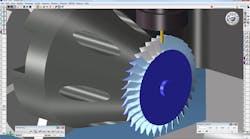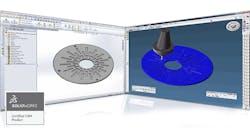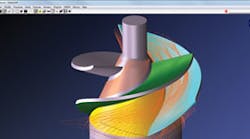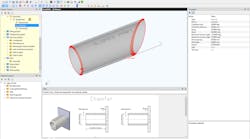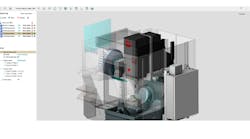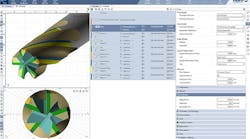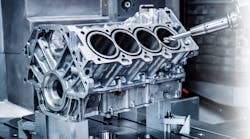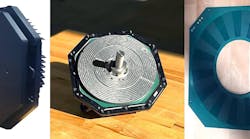Gibbs and Associates, the developer of GibbsCAM software for CNC machine tools, has outlined several new features and improvements it will include in the GibbsCAM 2013 release.
“We look forward to demonstrating the many new enhancements that will provide all GibbsCAM users incremental performance to the easy-to-use productivity tools they already enjoy,” stated Bill Gibbs, president and founder of the company. “Also, we are anxious to demonstrate some exciting new features designed to simplify programming and improve 5-axis milling in specialized applications.”
With the planned release of GibbsCAM 2013, the developer said it is continuing its record for incorporating powerful features with easy-to-use interface. Among the new features are:
• Two 5-axis multi-blade options. These options will simplify programming and machining for bladed turbo-machinery components such as impellers, blisks (bladed disks) and blings (bladed rings).
Specialized functions for roughing, blade finishing and hub finishing, with automatic tilting and linking, and full control of leading and trailing edges speed up programming, generate better surface finishes and reduce machining time.
• 5-axis porting. Gibbs and Associates said this new option would provide specialized functions that make programming faster and easier, and generate more efficient and smoother toolpaths for machining hollow parts that have significantly different shapes or sizes at each open end, or that have significant curvature from one end to the other, typical of engine exhaust ports, combustion chambers, manifolds and throttle bodies.
Among the enhancements to GibbsCAM 2013 will be:
• Improved support for Swiss-style machining. Rendering for toolpath verification and simulation will include guide bushings and provide more accurate visualization of Swiss-style parts.
• Mill feature. Users will be able to assign certain machining attributes directly to part features, allowing them to save and reuse knowledge-based-machining information for families of parts or similar-part machining.
Also, according to the developer, handling new parts and part changes will be quick and easy, with a single click.
• Surface flow. Improved machining strategies for solids machining include an improved algorithm to handle most nonplanar fillets and other blended faces for better surface finish and smoother, more efficient toolpath.
• Profiler modes. The Profiler, frequently used to inspect part models, find hidden features, and develop cross sections for turning or milling, will add slicing of spun bodies, silhouettes, and cylinders to its slicing function.
• Drilling and thread milling patterns. Users will be able to place drilling and thread milling in patterns. Pre-mill drilling of patterned milling operations will automatically recognize and execute drilling and thread milling patterns.
• Lathe threading and thread whirling. Users will be able to define lathe threads from any valid shape, including shapes that contain arcs or splines. Thread whirling will accept arcs and splines as input, and generate threaded arcs as output.
• Lathe plunge roughing. Improvements to lathe plunge roughing will result in toolpaths that remove more material in less time, and with reduced tool wear.
These new functions and updates will be demonstrated at EASTEC 2013, May 14-16, according to Gibbs and Associates.
